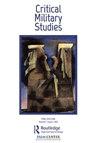疯狂的高度:锡亚琴冰川上的诊断、怀疑和军事纪律
Q1 Arts and Humanities
引用次数: 0
摘要
本文章由计算机程序翻译,如有差异,请以英文原文为准。
Heights of madness: diagnosis, suspicion & military discipline on the Siachen glacier
ABSTRACT The Siachen Glacier was occupied by the Indian Army in 1984 and became the highest battlefield in the world. The Pakistan Army has been deployed in the surrounding regions and the continuation of the low intensity warfare between the two countries has led to many thousands of casualties on both sides. The Pakistan Army has developed an elaborate medical infrastructure for the management of casualties and high-altitude sicknesses including oedemas and mental health issues. The article explores how military discipline becomes entangled with medical surveillance in monitoring illnesses suffered by soldiers serving on the glacier. By drawing upon interviews with soldiers and officers from various cohorts, the article explores how soldiers learn to take care of each other’s unusual bodily experiences and report unusual changes to the medical staff. This entails that soldiers cultivate relations to attend to each other’s injuries but also relay judgements about the soldier-patient’s loyalty to serve for the Pakistan Army to military superiors. By showing how social networks through which diagnosis is formulated consists of an entanglement of professional evaluation, medical opinion and the hearsay of the soldier-patient’s comrades, the article considers the disciplinary networks which detect and suppress symptoms where self-expression of symptoms is treated as malingering.
求助全文
通过发布文献求助,成功后即可免费获取论文全文。
去求助
来源期刊

Critical Military Studies
Arts and Humanities-History
CiteScore
1.90
自引率
0.00%
发文量
20
期刊介绍:
Critical Military Studies provides a rigorous, innovative platform for interdisciplinary debate on the operation of military power. It encourages the interrogation and destabilization of often taken-for-granted categories related to the military, militarism and militarization. It especially welcomes original thinking on contradictions and tensions central to the ways in which military institutions and military power work, how such tensions are reproduced within different societies and geopolitical arenas, and within and beyond academic discourse. Contributions on experiences of militarization among groups and individuals, and in hitherto underexplored, perhaps even seemingly ‘non-military’ settings are also encouraged. All submitted manuscripts are subject to initial appraisal by the Editor, and, if found suitable for further consideration, to double-blind peer review by independent, anonymous expert referees. The Journal also includes a non-peer reviewed section, Encounters, showcasing multidisciplinary forms of critique such as film and photography, and engaging with policy debates and activism.
 求助内容:
求助内容: 应助结果提醒方式:
应助结果提醒方式:


